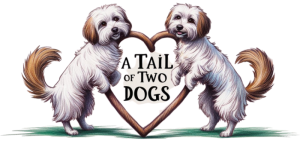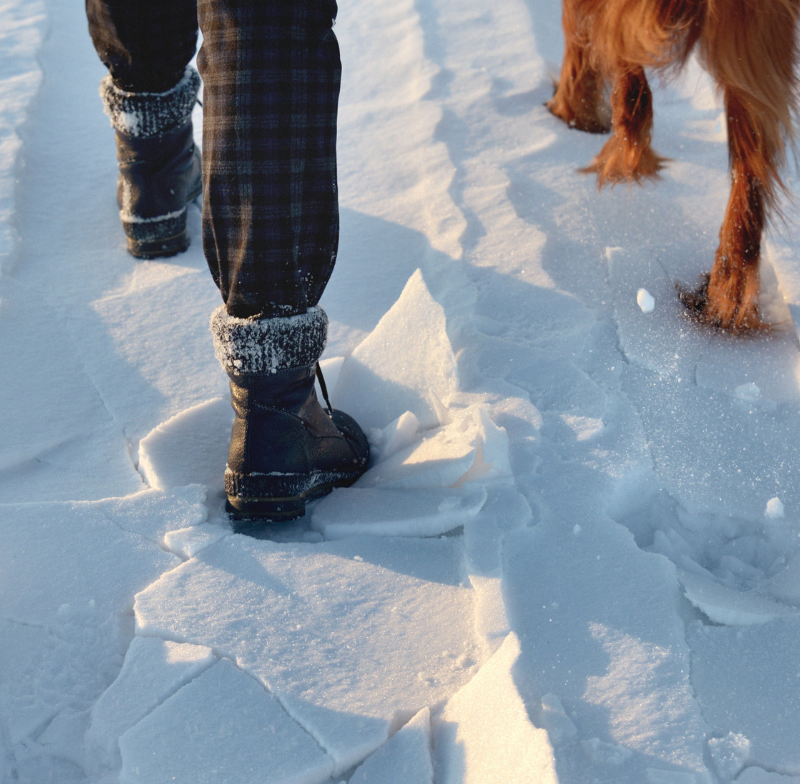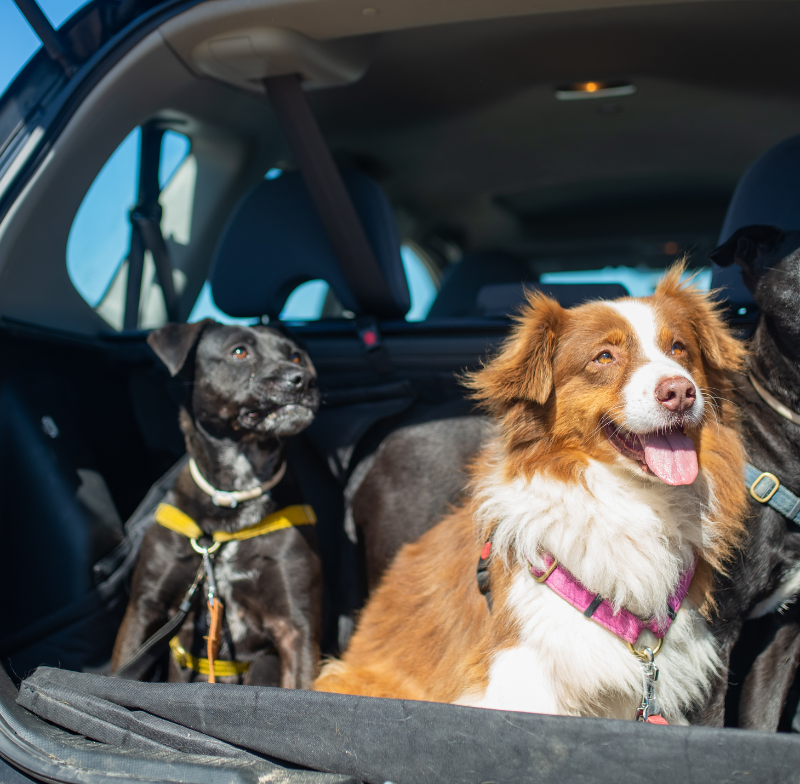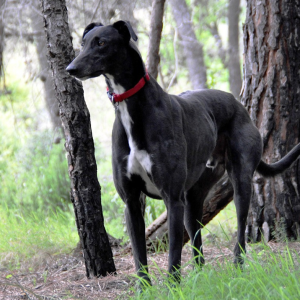Taking your dog on car journeys can be a stressful experience if they’re not properly prepared. Whether it’s a short trip to the vet or a long drive for a holiday, ensuring your dog remains calm and comfortable is crucial. Some dogs love car travel, while others find it overwhelming. Anxiety in dogs can be triggered by several factors, including motion sickness, unfamiliar sounds, and discomfort. The type of car, the way they’re secured, and how the journey is structured all play a role in their stress levels. This guide covers everything you need to know about making car travel a more enjoyable experience for your dog.
How the Type of Car Affects Your Dog’s Anxiety Levels
The car you drive can have a significant impact on how your dog experiences travel. Large SUVs with a spacious boot can provide a stable and secure space for dogs, while smaller cars may feel more restrictive. The level of noise inside the car, the suspension, and even the vibrations can make a difference.
Some dogs struggle with high-riding cars because they sway more on bends, while low-sitting cars with firm suspension can make bumps more pronounced. Hatchbacks often have good ventilation and visibility, which can help dogs feel more at ease, while saloons may have less airflow to the rear seats. If your dog has a dedicated space in the boot, ensure it is well-ventilated and that they can see outside to reduce anxiety.
Petrol, Diesel, or Electric: Does It Make a Difference?
The type of engine your car has can impact your dog’s travel experience. Diesel engines tend to be noisier at lower speeds, which can be unsettling for noise-sensitive dogs. Petrol cars are often quieter but may have a more noticeable vibration, particularly when idling.
Electric cars, on the other hand, provide a much smoother and quieter ride. Some dogs find this calming because there are fewer vibrations and no loud engine noise. However, other dogs might react negatively to the lack of familiar sounds they associate with travel. If you’re switching to an electric car, gradually introduce your dog to short journeys so they can get used to the change in sensation.
Make Your Dog Feel Safe: Training for Secure Spaces
Dogs need to feel secure while travelling. Whether you use a crate, a pet seatbelt harness, or a designated boot area, training your dog to settle in their space is essential. If using a crate, make sure it’s comfortable with a familiar blanket and possibly a favourite toy. A non-slip mat inside the crate can also help prevent them from sliding around.
For dogs travelling on the back seat, a seatbelt harness ensures they are safe in case of sudden braking. Some dogs feel more comfortable with a car seat cover that creates a ‘hammock’ effect, as it gives them a sense of enclosure. Training your dog to associate their travel space with positive experiences, such as treats and praise, can help them relax.
UK Laws on Securing Your Dog in the Car
In the UK, the Highway Code states that dogs must be suitably restrained in a vehicle to prevent distraction and ensure their safety. This can be done using a seatbelt harness, a pet carrier, a dog crate, or a guard. If your dog is not properly restrained and causes an accident, you could face fines or penalties for careless driving. Ensuring your dog is secure not only keeps them safe but also prevents them from interfering with the driver.
Spotting Signs of Stress and Taking Breaks
It’s important to monitor your dog for signs of travel anxiety. Some common signs of stress include:
- Excessive panting
- Drooling
- Whining or barking
- Restlessness
- Licking their lips or yawning frequently
- Shaking or trembling
If your dog exhibits these signs, take regular breaks. Stopping every 1-2 hours allows them to stretch their legs, have a drink, and relieve themselves. Some dogs benefit from a short walk during breaks to reduce pent-up energy and stress.
Gradually Introduce Travel for Nervous Dogs
If your dog struggles with car journeys, don’t force them into long trips straight away. Instead, start with short journeys around the block, gradually increasing the duration over time. Rewarding calm behaviour with treats and praise helps create positive associations.
For puppies or rescue dogs who are unfamiliar with cars, spend time getting them used to the vehicle while stationary. Let them explore the space, sit inside with them, and reward them for staying calm. Once they’re comfortable, start with short drives before progressing to longer trips.
Creating a Positive Environment
The atmosphere inside the car can influence how your dog feels. A calm, quiet environment is best, so avoid loud music or excessive talking. Playing classical music or specific pet-calming playlists can help reduce anxiety.
Bringing familiar items such as blankets, a favourite toy, or even an item of your clothing can provide reassurance. Scent is powerful for dogs, and familiar smells can have a comforting effect.
Pay Attention to Your Dog’s Vocal Sounds
Dogs communicate through their sounds, and understanding their vocalisations can help you assess their mood. A soft whine may indicate mild discomfort, while excessive barking or howling could be a sign of severe anxiety. If your dog is making distressed noises, stop and check on them.
Some dogs ‘talk’ when they’re excited, so it’s important to differentiate between happy sounds and stress-related vocalisations. If your dog appears overexcited, encourage them to settle with a calm voice and gentle strokes.
Beware of Sound Sensitivity in Dogs
Dogs have much more sensitive hearing than humans, so the sounds of the car journey can be overwhelming. Sudden loud noises, such as horns, sirens, or even the clicking of indicators, can startle them. Some dogs react negatively to the sound of rain hitting the roof or wind whistling through open windows.
If your dog is sound-sensitive, keeping windows partially closed and using gentle background music can help. Avoid sudden loud noises inside the car, such as slamming doors or turning up the volume on the radio too quickly.
Stay Calm in Traffic Jams
Being stuck in traffic can be frustrating for both you and your dog. If you become stressed, your dog is likely to pick up on it. They are highly attuned to human emotions, so staying calm and speaking in a reassuring tone can help them feel at ease.
If your dog gets restless in traffic, give them a chew toy or a treat to keep them occupied. Ensuring they have enough space and ventilation can also prevent them from becoming too hot or uncomfortable.
Ensure Proper Ventilation
Good airflow is essential for a comfortable journey. Make sure your car is well-ventilated, especially in warm weather. Air conditioning should be used if necessary, but avoid blasting cold air directly onto your dog.
If you’re using a crate in the boot, check that there is sufficient air circulation. Some boots can become stuffy, so consider using a vent fan or partially opening a rear window to allow fresh air in.
Plan Your Journey with Plenty of Stops
Long journeys should be planned with regular breaks in mind. Mapping out dog-friendly service stations or rest areas in advance can make the journey smoother. Some motorway services in the UK have designated dog-walking areas, which can be a great way for your dog to stretch their legs safely.
Having water available at all times is important, especially on hot days. A non-spill travel water bowl can help keep your dog hydrated without causing mess.
Making Car Travel Enjoyable for Your Dog
With the right preparation, car journeys don’t have to be stressful for you or your dog. Choosing the right vehicle setup, creating a calm environment, and understanding their stress signals can make all the difference. By securing your dog properly, taking regular breaks, and gradually getting them used to travel, you can ensure they feel safe and comfortable on the road.
Discover more from A Tail of Two Dogs
Subscribe to get the latest posts sent to your email.





Leave a Reply